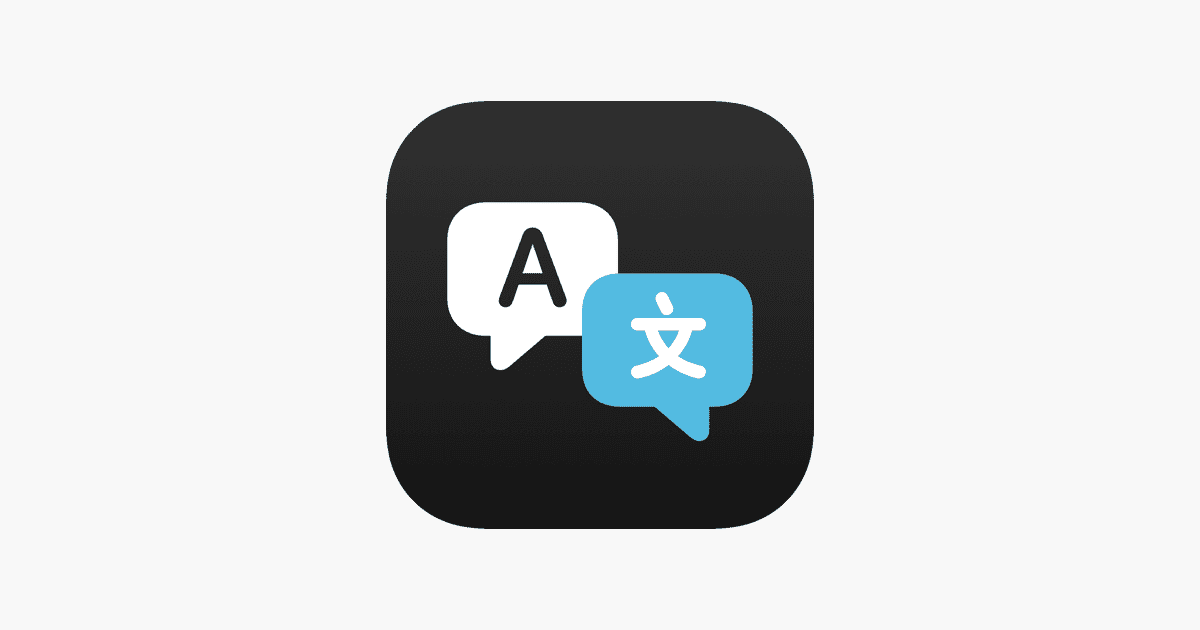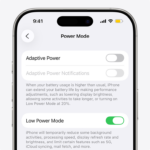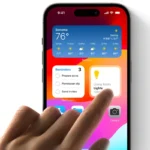Need to translate on the go? The Apple Translate app makes it simple to break down language barriers with just a few taps on your iPhone or iPad. This free built-in app lets you quickly translate your voice and text between multiple languages, even without an internet connection when you download languages. It works for both text and voice translations, making it perfect for travelers, language learners, or anyone who needs to communicate across languages.
The app offers a clean, user-friendly interface that allows for easy conversation mode between two people speaking different languages. You can speak directly into your device and see or hear the translation almost instantly. The app also saves recent translations, making it easy to refer back to phrases you use often.
Apple Translate App: Overview
The Apple Translate app is Apple’s built-in tool for translating text, speech, and conversations across multiple languages. Introduced in iOS 14, it has evolved into a powerful, AI-driven translation assistant integrated across iPhone, iPad, Mac, Apple Watch, and now Vision Pro.
With iOS 26 (released September 2025), Apple has significantly upgraded Translate with Apple Intelligence, offering smarter, faster, and more context-aware translations than ever before.
(source: Apple Newsroom)
🧠 What’s New in 2025
1. Live Translation for Phone Calls
One of the biggest new features in iOS 26 is Live Translation — available directly in the Phone app.
You can now have real-time translated conversations during calls. As you speak, Apple Intelligence translates your words and plays them to the other person in their language, and vice versa.
How to use it:
- Start a phone call.
- Tap the Translate icon on the call screen.
- Choose the languages for both speakers.
- Speak naturally — translations happen live.
(source: Tom’s Guide, MacRumors)
💡 Note: Live Translation currently supports major languages like English, Spanish, French, Mandarin, Japanese, and German, with more being added gradually.
2. Apple Intelligence-Powered Context Awareness
Apple Translate now uses Apple Intelligence to understand context — meaning it can:
- Adjust tone (formal vs. casual) based on your conversation.
- Recognize idioms, slang, and cultural nuances.
- Offer more natural and fluent translations.
This improvement makes conversations feel smoother and more human-like, especially in business or travel settings.
(source: Engadget)
3. Visual Translation with the Camera
Using Visual Intelligence, you can now point your camera at signs, menus, or documents, and Apple Translate instantly overlays translated text on the screen — similar to Google Lens, but with Apple’s privacy-first processing done on-device.
How to use:
- Open the Translate app.
- Tap the Camera icon.
- Point at text — translations appear live on your display.
4. System-Wide Translation
Apple Translate is now integrated across apps and devices:
- Safari: Instantly translate web pages.
- Messages & Mail: Translate text inline without switching apps.
- Notes & PDFs: Highlight text and tap Translate.
- Apple Watch: Use Siri or Translate to interpret short phrases on the go.
This system-wide integration makes translation seamless whether you’re reading, writing, or speaking.
5. Offline Mode Improvements
Apple has expanded offline translation capabilities. You can now download larger language packs that include:
- Better voice recognition.
- Updated phrase databases.
- Faster processing using the Neural Engine.
All translations remain private — processed locally on your device.
6. Cross-Device Continuity
Start translating on your iPhone and continue on your Mac or iPad seamlessly. Apple Intelligence syncs context (like conversation history and tone) across devices through end-to-end encryption.
🗣️ How to Access the Translate App
If you don’t see it:
- Swipe down from the Home screen.
- Type “Translate” in the search bar.
- Or ask Siri: “Open Translate.”
(source: SimplyMac)
⚙️ Supported Languages (as of October 2025)
Apple currently supports over 25 languages, including:
- English
- Spanish
- French
- German
- Italian
- Mandarin Chinese
- Japanese
- Korean
- Portuguese
- Arabic
- Russian
…and more being added regularly.
(source: MachineTranslation.com)
🔒 Privacy and On-Device Processing
Unlike many cloud-based services, Apple Translate prioritizes privacy:
- Most translations are processed on-device using Apple Silicon.
- Live Translation and Apple Intelligence features use Private Cloud Compute, ensuring your data is not stored or shared.
🧩 Apple Translate vs. Google Translate (2025)
| Feature | Apple Translate | Google Translate |
|---|---|---|
| Privacy | On-device, encrypted | Cloud-based |
| Integration | Deeply integrated across iOS/macOS | Web & Android focused |
| Live Translation | Built into Phone app | Separate app |
| Visual Translation | Camera overlay (Apple Intelligence) | Google Lens |
| Offline Mode | Expanded in iOS 26 | Mature, but cloud-reliant |
✈️ Real-World Use Cases
- Travel: Instantly translate signs, menus, or directions.
- Business: Conduct international calls with real-time translation.
- Education: Learn pronunciation and meaning with contextual examples.
- Accessibility: Help non-native speakers or those with hearing impairments communicate more easily.
✅ In Summary
| Feature | Description | Introduced |
|---|---|---|
| Live Call Translation | Real-time translations during phone calls | iOS 26 |
| Visual Translation | Camera-based, AI-powered text translation | iOS 26 |
| Context-Aware AI | Smarter, tone-sensitive translations | iOS 26 |
| Offline Mode Upgrade | Larger, faster language packs | iOS 26 |
| System-Wide Integration | Works in Safari, Messages, and more | iOS 26 |
Bottom line:
The 2025 update makes Apple Translate not just a translation tool, but a full-fledged AI-powered communication assistant. With Live Translation, Visual Intelligence, and on-device privacy, Apple is positioning Translate as a serious rival to Google Translate — but with the seamless integration and privacy Apple users expect.
Key Takeaways
- Apple’s Translate app offers quick text and voice translations with a simple interface for everyday use.
- You can download languages for offline translation when traveling without internet access.
- The conversation mode makes real-time two-way communication possible between people speaking different languages.
Overview of Apple Translate App
Apple’s Translate app offers powerful translation features for iOS users, supporting multiple languages and various modes of input. The app has evolved significantly since its introduction, adding new capabilities and expanding device compatibility.
History and Development
Apple introduced the Translate app on June 22, 2020, as part of iOS 14. Before this release, Apple users relied on third-party translation services. The app was created to provide a native solution integrated with Apple’s ecosystem.
Since its launch, Apple has consistently improved the app with each iOS update. Early versions supported only a handful of languages, but the selection has grown substantially.
The development team focused on creating a privacy-centered translation tool. Unlike some competitors, Apple Translate can work offline after downloading language packs, ensuring translations without an internet connection.
Recent iOS updates have brought more features like camera translation and expanded language support. The app now integrates more deeply with Siri and other Apple services.
Core Features
The Apple Translate app offers several key functions. Users can translate text, voice, and entire conversations between supported languages. The app displays translations in real-time as you type or speak.
The conversation mode enables two people speaking different languages to communicate naturally. The app detects which language is being spoken and translates automatically.
Camera translation is another helpful feature. Users can point their device’s camera at text to get an instant translation, perfect for reading menus or signs in foreign countries.
Other notable features include:
- Favorites section for saving common phrases
- Offline translations with downloaded languages
- Dictionary feature to look up word meanings
- Pronunciation guides with audio playback
Supported Devices
The Apple Translate app requires iOS 14 or later and works on compatible iPhones and iPads. The app is pre-installed on devices running iOS 14 and newer versions.
iPhone models from iPhone 6s and newer can run the app with the proper iOS version. For iPad users, iPadOS 14 or later is required to access all translation features.
While the app was initially exclusive to iOS and iPadOS, Apple has expanded its availability. Limited translation features are now accessible on Apple Watch through watchOS updates.
Mac users can access translation features through macOS, though the full standalone app experience differs from the iOS version. The Mac translation tools integrate with Safari and other system features.
For the best experience, newer devices with updated operating systems provide access to all the latest translation capabilities and language options.
Language Coverage
Apple Translate offers a solid foundation of language options, with current support for 19 languages across its platform. The app focuses on commonly spoken languages while gradually adding more options for users who need to communicate across different regions.
Major Languages
Apple Translate includes the most widely spoken languages around the world. Users can translate between English, French, German, Spanish, Italian, Portuguese, Russian, Chinese, Japanese, Korean, and Arabic. The app supports both American and British English dialects.
For Asian languages, both Japanese and Korean translations work well for basic conversations. The app also includes Mandarin Chinese with both mainland and Taiwan dialect options.
The European language selection covers most major Western European tongues. French, German, Italian, and Spanish translations are quite accurate for everyday use. Russian is also available for Eastern European communication needs.
Expanding Language Database
Apple continues to add new languages to its Translate app. While the initial release had fewer options, the company has steadily increased coverage over time.
Current gaps in the language lineup include some widely spoken languages like Hindi, Vietnamese, Thai, Dutch, Polish, and Ukrainian. These languages are available in competing translation apps but not yet in Apple Translate.
Users who need offline translation capabilities can download specific language packs. This feature works with all currently supported languages in the app.
For those needing more language options, third-party alternatives like iTranslate offer over 100 languages compared to Apple’s 19. Apple will likely add more languages in future iOS updates.
User Experience
The Apple Translate app offers a mix of useful features and some limitations that affect how people interact with it daily. Users report varying experiences depending on their specific needs and use cases.
Interface and Ease of Use
Apple’s Translate app has a clean, straightforward design typical of Apple products. The main screen displays two language options at the top that users can tap to switch between. This simple layout makes translating phrases quick and accessible for beginners.
Text entry happens in a large central field, with a microphone button for voice input. Once translated, the app displays both languages clearly. The interface supports landscape mode which splits the screen for better conversation view.
Some users find the app’s controls less intuitive than competitors. On Reddit, users have complained about the difficulty switching languages and the app’s sometimes unresponsive nature. This can be frustrating during time-sensitive situations like travel conversations.
The app allows saving favorite phrases for quick access later, a handy feature for frequent travelers.
Accessibility Features
Apple built the Translate app with several helpful accessibility options. Text size can be adjusted to improve readability for users with visual impairments. The voice output speaks translations clearly at adjustable speeds.
The app supports offline translations after downloading language packs. This proves essential when traveling without data connections. The download process is simple – users just tap a download button next to their desired language.
The conversation mode turns the iPhone into a tool for live dialogue between speakers of different languages. Users can hold their device between them as it translates speech in both directions.
For those with hearing disabilities, the app displays text transcriptions of all spoken content. The high-contrast display options make these transcriptions easier to read in various lighting conditions.
Comparative Analysis
When choosing a translation app, several factors come into play including accuracy, supported languages, and ease of use. The following analysis compares Apple Translate with alternatives and explores how it works within the Apple ecosystem.
Apple Translate vs Google Translate
Apple Translate and Google Translate offer similar core functionality, but differ in key areas. Google Translate currently supports more languages than Apple Translate, giving it an edge for international travelers.
In terms of accuracy, both apps perform well for common phrases and simple translations. Tests show they are on par with each other for most languages, though users occasionally notice slight differences in translations.
Google Translate offers more input methods:
- Text input
- Voice recognition
- Camera translation
- Handwriting recognition
Apple Translate focuses on a cleaner interface with fewer options but faster performance on Apple devices. Its offline mode works exceptionally well, downloading language packs that function without internet connection.
Integration with Other Apple Products
Apple Translate shines when used with other Apple products. The app works seamlessly with Siri, allowing users to request translations through voice commands on iPhone, iPad, and Mac.
AirPods integration creates a powerful translation experience. Users can speak in their native language while wearing AirPods, and the translation plays through the iPhone speaker. The person responding can then speak into the iPhone, with the translation coming through the AirPods.
This feature helps in real conversations more naturally than holding up a phone between speakers. Unlike Google’s Pixel Buds, which require constant phone interaction, AirPods and Apple Translate create a smoother experience.
The app also integrates with Safari, allowing webpage translation directly in the browser without copying text to another app.
Ecosystem Synergy
Apple Translate leverages the power of the entire Apple ecosystem. Translations sync across devices through iCloud, so phrases saved on iPhone appear on iPad and Mac instantly.
The app uses Apple’s Neural Engine for processing, keeping translations private and secure. Unlike some competitors, Apple Translate processes most translations on-device rather than sending data to servers.
Apple’s Shortcuts app allows users to create custom translation workflows. For example, a user can create a shortcut that:
- Translates selected text
- Reads the translation aloud
- Sends it as a message
These automations aren’t possible with Google Translate on iOS. The integration extends to Apple Watch, where quick translations are available with a tap, especially useful for travelers asking simple questions or reading signs.
Apple’s Focus on privacy gives its translation app an advantage for business users who handle sensitive information.
Technical Aspects
The Apple Translate app combines sophisticated translation technology with strong privacy features and offline capabilities to break down language barriers effectively.
Underlying Translation Technology
The Apple Translate app uses advanced neural machine translation (NMT) technology to provide accurate translations. This system processes whole sentences rather than individual words, giving more natural results.
The app supports 19 different languages including English, Spanish, French, Italian, German, Russian, and Portuguese. This wide range makes it useful for many international travelers and language learners.
One standout feature is the ability to translate text from images. The camera translation function lets users point their camera at signs, menus, or other text to get instant translations without typing.
The app also offers voice recognition for spoken translations, which works through built-in machine learning algorithms that improve over time.
Offline Capabilities
Users can download languages directly to their device for offline use. This is extremely helpful when traveling without data access or in areas with poor connectivity.
To use this feature:
- Go to the Translate app
- Tap the language button
- Select “Available Offline Languages”
- Download the ones you need
Downloaded languages take up storage space on the device but enable full functionality without an internet connection. This includes text, voice, and conversation translations.
The quality of offline translations matches online performance for most common phrases and expressions. Users won’t notice much difference in accuracy when using downloaded languages.
Privacy and Security
Apple built the Translate app with privacy as a priority. All translations can happen directly on the device when languages are downloaded, meaning sensitive conversations don’t need to be sent to external servers.
The app doesn’t store or save your translation history by default. This protects private communications from being accessed later.
For additional security, Apple uses on-device processing whenever possible. This approach is different from many other translation services that rely heavily on cloud processing.
The Apple Translate app is integrated with the same security framework as other Apple services, benefiting from the company’s strong stance on user privacy and data protection.
Future Developments
Apple’s translation technology is poised for significant advancements in the coming years. The company is working on revolutionary features that will transform how we communicate across language barriers, with particular focus on hardware integration and AI-powered improvements.
Anticipated Software Updates
Apple plans to release major updates to its Translate app in iOS 19, expected in fall 2025. These updates will likely incorporate more advanced AI processing capabilities, allowing for faster and more accurate translations even without internet connection.
The company is enhancing Siri’s translation abilities to handle more complex sentence structures and regional dialects. This improvement addresses current limitations where idioms and culturally-specific phrases often get mistranslated.
Apple is also expanding language support beyond the current offerings. The focus appears to be on adding more African and Southeast Asian languages to its roster.
Users can expect improved voice recognition technology that works better in noisy environments. This update will be particularly useful for travelers trying to translate conversations in busy public spaces.
Rumored Features
According to Bloomberg reports, Apple is developing a groundbreaking live translation feature for AirPods. This technology would allow real-time translation of conversations directly through the earbuds.
The AirPods translation system might work by having one person wear an AirPod while talking to someone speaking another language. The earbuds would translate what’s being said and respond through the iPhone’s speakers.
Industry experts suggest this feature could debut with new AirPods models in late 2025 or early 2026. The technology builds on Apple’s existing Neural Engine capabilities in its chips.
Apple may also introduce visual translation features using the iPhone camera. This would allow users to point their camera at text and see instant translations overlaid on the screen.
Frequently Asked Questions
The Apple Translate app offers many helpful features for iPhone users. Here are answers to common questions about downloading, using, and making the most of this handy translation tool.
How do I download the Apple Translate app on my iPhone?
The Apple Translate app comes pre-installed on iPhones running iOS 14 or later. You don’t need to download it separately from the App Store.
If you can’t find it on your home screen, try searching for “Translate” using the search function on your iPhone. Swipe down from the middle of your home screen and type “Translate” in the search bar.
Is the Apple Translate app available for free on the App Store?
Yes, the Apple Translate app is completely free to use. Despite some rumors about subscription requirements, the app remains free for all iPhone users with compatible devices.
No payment or subscription is needed to access the basic translation features. Apple provides this as a built-in service on compatible iPhones.
Can the Apple Translate app perform real-time voice translation?
Yes, the Apple Translate app supports real-time voice translation. The app lets you translate voice conversations in supported languages.
To use this feature, open the Translate app and tap on “Conversation” mode. Then you can speak directly into your phone and hear the translation or see it displayed on your screen.
Does the Apple Translate app support offline translation features?
Yes, the Apple Translate app supports offline translation. This feature allows you to translate text and speech without an internet connection.
To enable offline translation, download the languages you need in advance. Go to the Translate app, tap on one of the language selectors, and download the languages you want to use offline.
How do I enable Tap to Translate feature on the Apple Translate app?
To use Tap to Translate, select text in any app like Safari, Messages, or Mail. After selecting the text, tap on it and you’ll see a “Translate” option.
If you don’t see the Translate option immediately, tap the arrow or “more” button to reveal additional options. The translated text will appear right where you are, without needing to switch apps.
What languages are supported by the Apple Translate app?
The Apple Translate app supports many major languages including English, Spanish, Mandarin Chinese, Japanese, Korean, Arabic, French, German, Italian, Portuguese, and Russian.
Apple regularly adds new languages through iOS updates. To see the full list of currently supported languages, open the Translate app and tap on either language selector at the top of the screen.







